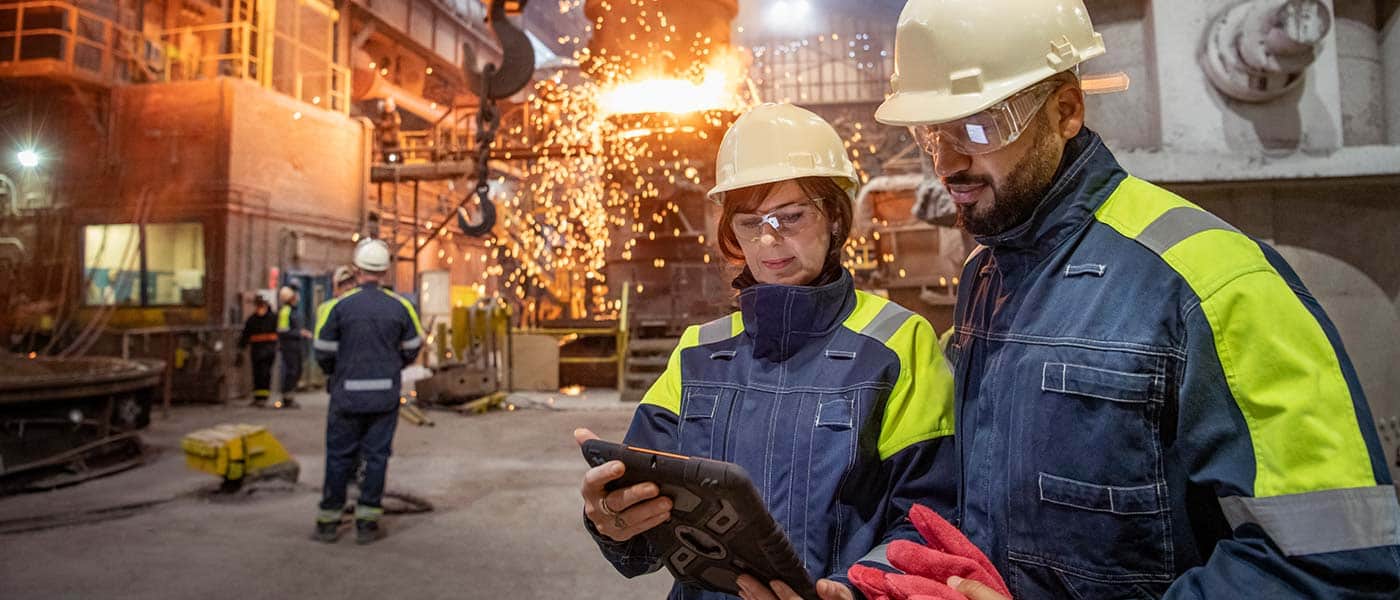April 8, 2020

Related Blogs:
Sign up for blog updates
Get innovation delivered to your inbox. Sign up for our blog and stay on top of the very latest from Semtech (formerly Sierra Wireless).
April 8, 2020

For example: Axibio, a Paris-based biowaste management company, is using Sierra Wireless Octave™, the all-in-one edge-to-cloud IIoT solution, to connect to its smart biowaste collectors, allowing it to monitor waste disposal and help municipalities reward city residents for their ecologically conscious behavior.
Despite the IIoT’s enormous potential, too often innovative IIoT projects are not as successful as the one described above. In fact, according to Microsoft’s own recent IoT Signals report, IoT adopters believe around one-third of IoT projects fail in the proof of concept (POC) stage.
While companies cite many reasons for the failure of their IoT deployment initiatives, several of these reasons are related to a larger problem – the difficulties involved in gathering the large number of skills needed to deal with the complexity involved in an IIoT project. This complexity – along with the time that it can take to set up IIoT applications, the high up-front costs involved in IIoT projects, and the IIoT’s unique security challenges – have slowed or stopped many IIoT deployment projects, or lowered their ROI. Further, there are difficulties associated with trying to assemble the various skillsets that companies need to build not just the IIoT application itself, but also the device-to-cloud infrastructure needed to run and support the application.
This is not surprising, as it is not easy find people with expertise in:
These are just a few of the different types of expertise required to build an IIoT application and the infrastructure needed to support it from the ground up. For most companies, assembling all this expertise, either in-house or on a contractual basis, is a formidable, if not impossible, challenge.
However, recent innovations in the IIoT allow companies to cut through this complexity. For example, by pairing Octave with Microsoft Azure IoT Central, companies can simplify development and deployment of new industrial IoT applications.
Octave provides companies with all the IIoT infrastructure they need to securely extract, orchestrate, and act on data from their industrial assets. With Octave, companies don’t need to find their own experts on industrial equipment communications protocols – Octave can pull and normalize data from virtually any type of industrial equipment.
In addition, companies using Octave gain access to connectivity from over 600 mobile network operators in more than 160 countries around the world. Octave also includes Ready to Connect edge devices with pre-provisioned SIM cards that connect these devices to cellular networks as soon as they are powered on.
Moreover, Octave’s message-based pricing allows companies to accurately forecast their data connectivity costs, so they can validate their IoT application business models with confidence. Octave can also seamlessly integrate industrial IoT data into their systems of record thanks to its built-in cloud APIs, which connect Octave to cloud services like Microsoft Azure IoT Central.
Meanwhile, with Azure IoT Central, companies have a fully managed global IoT SaaS (software as a service) solution that they can use to quickly build and easily manage IIoT applications that connect to, monitor, and control industrial assets. With Azure IoT Central, companies can apply filters to industrial asset data, or split it based on different properties, so this data can be used to trigger specific actions. They can also visualize data into a format that allows users to quickly evaluate an asset’s performance. In addition, Azure IoT Central allows companies to transmit industrial asset data to ERP, CRM, billing and other business applications.
By removing the complexity that has limited the success of IIoT projects in the past, Octave and Azure IoT Central allows companies to overcome other IIoT deployment difficulties. For example, with Octave and Azure IoT Central, companies can significantly reduce IIoT application development times and lower their up-front IIoT project costs. Octave and Azure IoT Central also helps companies to address the IIoT’s unique security challenges, by providing them with end-to-end security that protects data from the point equipment data is extracted by edge devices to the point where it is ingested by the cloud.
With new solutions like Octave and Azure IoT Central, the stage is finally set for the full democratization of the IIoT. Companies can now avoid the complexities involved in developing, deploying and scaling industrial IoT solutions, empowering them to quickly and cost-effectively bring to market transformative IIoT applications that change the way they do business.
The new industrial revolution enabled by Industry 4.0 is no longer on the horizon. It is finally here. The question is – will you seize the opportunities offered by this revolution? Or allow your competitors to do so?
Get innovation delivered to your inbox. Sign up for our blog and stay on top of the very latest from Semtech (formerly Sierra Wireless).